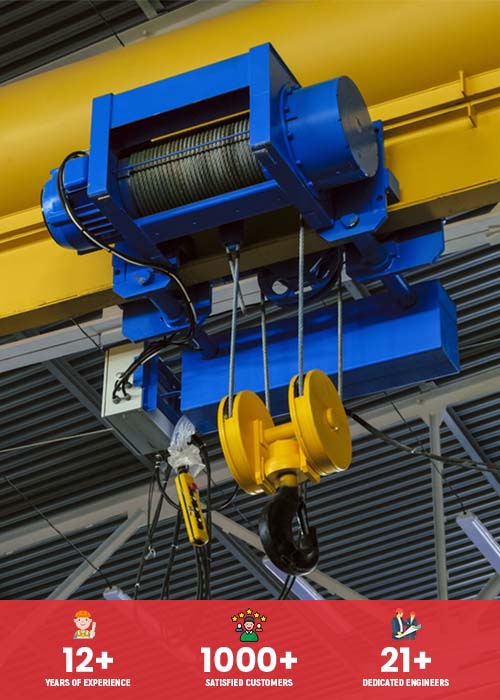Maintenance Checklist: When and What to Inspect in a Goods Lift
A goods lift plays a vital role in warehouses, factories, shopping malls, and commercial spaces where heavy materials need to be moved safely and efficiently. Regular maintenance ensures that the lift operates smoothly, reduces downtime, and prevents accidents. If you are planning to install or already own one, consulting a reliable Goods lift manufacturer not only helps in choosing the right lift but also provides guidance on maintenance practices that keep the equipment in top condition.
In this article, we will discuss a detailed maintenance checklist, when inspections should be carried out, and what specific components of a goods lift need regular attention.
Importance of Regular Maintenance of a Goods Lift
Goods lifts are subjected to continuous heavy usage. Without proper care, wear and tear can lead to malfunctions, which can affect daily operations and even pose safety risks. Regular maintenance offers below benefits:
- Increased Safety: Prevents sudden breakdowns and accidents.
- Cost Efficiency: Reduces major repair expenses by identifying issues early.
- Extended Lifespan: Ensures the lift remains functional for many years.
- Compliance: Keeps the lift in line with safety standards and legal requirements.
- Smooth Operations: Minimizes downtime, ensuring goods move without delays.
Maintenance Checklist for Goods Lifts
A good maintenance plan includes routine checks and scheduled inspections. Here’s a comprehensive checklist of what to inspect and when:
Daily Inspections
These are basic checks that should be carried out by operators before using the lift each day:
- Check for unusual noises while operating the lift.
- Ensure that doors open and close smoothly.
- Inspect floor alignment to see if the lift stops at the correct level.
- Verify emergency buttons and alarms are functioning.
Daily checks help in catching small issues early before they become serious problems.
Weekly Inspections
Weekly inspections can be conducted by in-house maintenance staff. These include:
- Inspecting guide rails for wear and lubrication.
- Checking safety locks and mechanical door interlocks.
- Testing the emergency stop button.
- Examining the control panel for loose wires or unusual signals.
Monthly Inspections
A more detailed examination should be performed by technicians or trained staff:
- Cables and Pulleys: Look for fraying, rust, or signs of excessive wear.
- Hydraulic Systems (if applicable): Check for oil leakage and maintain adequate pressure.
- Load Testing: Ensure the lift can handle its maximum capacity without strain.
- Ventilation Fans: Make sure they are working properly to avoid overheating.
Quarterly Inspections
Quarterly checks are crucial for maintaining long-term efficiency:
- Inspect the lift pit for water, debris, or corrosion.
- Check the motor and gearbox for proper functioning.
- Ensure all safety signage and instructions inside the lift are intact.
- Calibrate the control system to maintain accurate stops.
- Test the backup power system for emergency operations.
Annual Inspections
An annual inspection must always be carried out by a certified technician from your service provider or the Goods lift manufacturer. These include:
- Comprehensive safety audit of the entire system.
- Replacement of worn-out parts.
- Full electrical system inspection including fuses, relays, and circuit breakers.
- Structural inspection to detect any cracks, rust, or weaknesses in the lift shaft.
- Emergency drill to ensure staff knows how to respond in case of breakdowns.
Key Components to Inspect in a Goods Lift
Here are the most critical parts that should always be included in any maintenance checklist:
- Motor and Gearbox- The powerhouse of the lift, responsible for smooth operations.
- Cables and Ropes – Must be free from frays, rust, or excessive stretching.
- Braking System – A vital safety component that requires precise calibration.
- Hydraulic Oil Levels – In hydraulic lifts, keeping oil levels consistent ensures efficiency.
- Doors and Interlocks – Prevent accidents and ensure smooth opening/closing.
- Electrical Systems – Covers wiring, switches, and control panels.
- Lift Car and Frame – The structure must be inspected for damage, dents, or alignment issues.
- Safety Devices – Emergency alarms, intercoms, and overload indicators should always be functional.
Signs Your Goods Lift Needs Immediate Attention
Even with regular inspections, some warning signs must never be ignored:
- Strange noises such as grinding or screeching.
- Jerky movements while going up or down.
- Doors failing to open or close properly.
- Lift stopping between floors.
- Burning smell from the motor or electrical system.
If any of these issues appear, stop using the lift and call for professional maintenance immediately.
Conclusion
A goods lift is an essential investment that keeps materials moving efficiently across different floors. To ensure maximum safety, reliability, and performance, a structured maintenance checklist is crucial. From daily checks to annual inspections, each step helps in preventing costly breakdowns and ensuring compliance with safety regulations.
Partnering with a trusted manufacturer not only provides you with high-quality equipment but also ensures access to expert maintenance services. By following this checklist and scheduling regular inspections, you can keep your lift in excellent condition for years to come.




